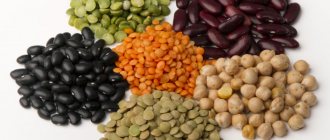More and more smart people are beginning to understand that their health depends on what foods they consume, what quality of water they drink, and what daily routine they lead.
Food products contain all the necessary microelements for the normal functioning of the human body. Only each food group: carbohydrates, proteins, fats contains a certain set of useful microelements.
Now you will read which foods contain amino acids that affect height, weight and other parameters of the human body.
Nowadays amino acids “extracted” by chemical means are mass produced/sold in beautiful jars.
To understand the problem, let's give an analogy.
Previously, you regularly went to the supermarket for groceries. Every day you took a walk and carried a bag of groceries. In a word, your body “moved.” And then another person started shopping for groceries.
You have fallen out of the usual rhythm of life; your body has ceased to experience programmed, useful loads. Will such a change in the rhythm of life have a positive or negative effect? You decide.
Only when an athlete begins to consume “pure” amino acids that he bought does his body begin to “be lazy”: it stops efficiently extracting amino acids from food.
Now read which foods contain essential amino acids
Basically, amino acids are found in protein group products: various types of meat, legumes, dairy products, nuts, wheat, oats, fish, mushrooms, seafood, eggs, some types of fruits, seeds of some plants (sunflower, pumpkin).
By eating these protein group foods, a person allows the body to independently produce the amino acids necessary for normal functioning.
For example: tryptophan is produced from bananas, oats, dried dates, pine nuts, cashews, chicken and turkey meat, milk, yogurt, cottage cheese.
What are the essential amino acids and why are they needed?
Amino acids play a huge role in the development and restoration of muscles, bones, and other tissues. But their deficiency can affect not only the musculoskeletal system, but also other systems - nervous, immune, digestive.
Here's what Essential Amino Acids do: Definition, Benefits and Food Sources nine essential amino acids.
Phenylalanine
Based on this amino acid, the body produces neurotransmitter hormones such as adrenaline, dopamine, tyrosine, and norepinephrine. In addition, phenylalanine is needed for the production of other non-essential amino acids, as well as some enzymes.
Valin
Valine participates in energy metabolism (thanks to this amino acid, cells obtain energy from glucose in the blood), stimulates muscle growth and regeneration.
Threonine
Without it, L‑Threonine cannot produce protein structures such as collagen and elastin, the most important components of the skin and connective tissue.
Tryptophan
Tryptophan is a precursor of serotonin, a hormone that regulates appetite, sleep and mood.
Methionine
This essential amino acid plays an important role Methionine in metabolic processes and detoxification, that is, it helps remove cell breakdown products from the body. In addition, methionine is necessary for the growth and regeneration of various tissues, the absorption of zinc, selenium and a number of other minerals.
Leucine
Leucine is critically needed for protein synthesis (including collagen fibers), wound healing and muscle recovery. Leucine also helps regulate blood sugar levels and is involved in the production of growth hormones.
Isoleucine
l‑Isoleucine is involved in the metabolism occurring in muscle tissue, as well as in the production of hemoglobin and some functions of the immune system.
Lysine
Lysine is necessary for the absorption of calcium, the synthesis of certain hormones and protein tissues (the same collagen and elastin).
Histidine
Based on Histidine, this amino acid produces histamine, a neurotransmitter that ensures a quick response of the immune system to all kinds of irritants. Normal digestion, sexual function, sleep, and wakefulness are also practically impossible without histidine. This amino acid is also involved in the creation of the myelin sheath, a protective barrier surrounding nerve cells.
Classification

The table of amino acids reflects their classification by type: essential and essential. All of them are necessary for the human body.
All amino acids are divided into two groups:
- irreplaceable or essential. These are the amino acids that the human body cannot produce on its own. They come to us with food with a rational diet;
- replaceable. The body synthesizes them independently from those substances that come with food. But you should not underestimate them, so it is advisable that they also enter the body with food.
For ease of use, a table of amino acids has been compiled, from which it is easy to determine how many essential ones will enter the body. For simplicity, there are indicators in % and in grams.
We also recommend studying this topic:
How should you take Pureprotein Arginine Complex correctly?
4896 0 1
Nonessential amino acids
This type includes:
- alanine It is a source of energy into the body's cells and allows you to accelerate the removal of toxins from the liver;
- arginine Allows you to normalize liver function, quickly restore muscles, strengthen the immune system;
- asparagine The action is similar to aspartic acid;
- aspartic acid. Allows you to normalize metabolic processes, activate energy synthesis, and also provides support for the nervous system.
- cysteine. It is involved in normalizing the condition of hair, as well as nails and skin. Helps relieve symptoms of cancer and bronchitis.
- glutamic acid. The action is similar to glutatin.
- glutamine Effectively removes toxins from the liver and takes part in muscle growth. Adds strength, endurance, and energy to the athlete.
- glycine. It restores the normal functioning of the nervous system.
- proline This amino acid improves the condition of human skin;
- serine Fills the body's cells with energy.
- tyrosine Increases brain activity, participates in the formation of muscle protein.

Table of amino acid content in each product in shares. Athlete's handbook.
A table of amino acids, including a list of all essential and essential ones, is like a reference book for athletes.
Important! A lack of these amino acids can lead to the body starting to replenish them at the expense of muscle mass, which is unacceptable for a bodybuilder and other athletes.
Essential amino acids
These include:
- histidine It is present in the human body and performs the functions of participating in the creation of blood cells. It is truly considered the basis of the immune system.
Important! This amino acid is consumed very quickly, so it requires constant replenishment.
- isoleucine. Its priority function is to increase endurance, as well as restore energy;
- leucine The main amino acid for the human body, which is involved in the regeneration of muscle fibers. It allows you to stop catabolism. Leucine helps regulate sugar levels, burn fat deposits;
- lysine. Ensure the body fights viral diseases;
- methionine Helps fight fat. Improves endurance as well as strength;
- phenylalanine. The priority direction of the amino acid is to normalize the functioning of the nervous system;
- threonine This amino acid normalizes protein metabolism and stimulates muscle development;
- tryptophan. Functions: normalize blood pressure, improve sleep;
- valine Provides tissue regeneration and saturates the body with energy.
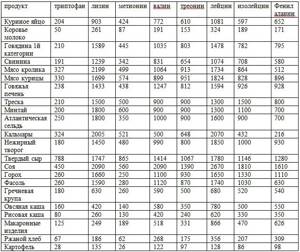
Table of amino acid content in milligrams in different foods. A balanced diet will help saturate the body with the required amount of amino acids, and you can supplement it with supplements from the sports nutrition series
Replaceable and essential amino acids, the table of which is presented in the article, will serve as a reference book not only for an athlete, but also for people who care about their health.
We also recommend studying this topic:
Purpose of glutamine, its properties and dosage regimen
10652 0 0
Readers found these materials useful:
- The effect of taurine on the body in bodybuilding
- How should you take Pureprotein Arginine Complex correctly?
What foods contain essential amino acids?
The main source of essential amino acids is protein foods. However, it varies.
Doctors call foods that contain all nine essential amino acids Essential Amino Acids: Definition, Benefits and Food Sources complete proteins. Those that lack one or two amino acids are incomplete.
The best sources of essential amino acids are animal proteins. But even if you are a vegetarian, you can make your diet complete. To do this, it is enough to eat different types of protein plant foods every day. Thus, the absence of an amino acid in one product will be compensated by its presence in another.
Complete protein sources
These products include:
- meat:
- bird;
- eggs;
- seafood;
- dairy products;
- some types of plant foods: buckwheat, soy, quinoa.
Incomplete protein sources
Many, but not all, essential amino acids will be provided by:
- nuts;
- legumes (beans, chickpeas, peas);
- seeds - sunflower, pumpkin, sesame;
- whole grain products - bread, cereals;
- vegetables.
The effect of amino acids on the body
Protein that enters the body with food is broken down into 20 amino acids. They are required to perform the following functions:
- synthesis of hormones;
- maintaining the activity of thought processes due to the conduction of nerve impulses;
- tissue restoration and growth;
- regulation of the nervous system;
- formation of muscle fibers;
- production of antibodies and enzymes;
- Metabolism management.

Organic compounds are a structural component of proteins
What are the benefits of high protein foods?
Eating protein-rich foods will not only increase your metabolic rate, reduce appetite, increase muscle mass, but also make your bones and cartilage stronger, and improve the condition of your blood, skin and other tissues of your body.
The recommended daily intake of protein for adults is:
- from 65 to 117 grams per day for men,
- from 58 to 87 grams per day for women.
It is worth about - this concept is purely individual. The establishment of the norm is influenced by many factors: gender, age, weight, body type. level of physical activity, etc.
Best Plant Based Sources of Protein
Speaking about proper and healthy nutrition, we must not forget about those who, for one reason or another, have given up eating meat and/or animal products.
Many people still tend to believe that a vegetarian diet is inferior or even harmful to human health. In reality, this is not at all the case.
For example, plant-based protein foods such as tofu or tempeh contain all the essential amino acids. In addition, they also contain phytonutrients - useful biologically active components of plants that protect them from an aggressive environment, which are very easily absorbed by the human body.
In the scientific journal Nutrients, researchers took a comprehensive look at vegetarian, pescatarian, and omnivorous diets and concluded that plant-based diets are the healthiest of all.
However, scientists have recognized that people who give up animal products will need to take certain nutritional supplements to make up for the lack of nutrients that are not found in plant foods (such as calcium). Therefore, we can say that although a vegetarian diet is the most healthy, it is not without its problems.
List of plant foods with high protein content

Tofu
Tofu is essentially bean curd (or soy cheese, whichever you prefer) and has a neutral taste. However, because it perfectly absorbs the flavor of any spices you cook it with, tofu is an extremely versatile product in cooking. This product is a rich source of vegetable proteins; in addition, it is low in calories and contains almost no fat and carbohydrates. The ratio of proteins and carbohydrates in tofu is 3:1. Also, according to American scientists, eating tofu reduces the risk of prostate cancer.

Tempe
This fermented product is also made from soybeans. But, unlike tofu, it is produced using whole beans rather than soy milk. Tempeh is rich in vitamins and minerals and contains a lot of fiber. It is worth noting that the protein found in tempe is easily digested and absorbed by the body due to the preliminary fermentation of the product during the manufacturing process.
Soybeans

Usually there is not a lot of protein in plant-based products, but here there is 14%. It is the leader among plant foods in terms of the amount of protein it contains. Soy is used as a meat substitute. But still, it should be used as a side dish, due to the incomplete set of amino acids it contains.

Seitan
Seitan is a food product made from wheat protein, also called gluten or gluten. Due to its high protein content (25 g of protein per 100 g of product), as well as its appearance, texture and consistency, seitan has become known throughout the world as a plant-based meat substitute.

Jackfruit
Jackfruit (also called jackfruit) is the fruit of a woody plant that is a close relative of breadfruit. Resembling a cross between a mango and a lychee, this huge green fruit is a rich source of vitamin C and manganese, which helps regulate blood sugar. Cooked jackfruit tastes remarkably similar to pulled pork.
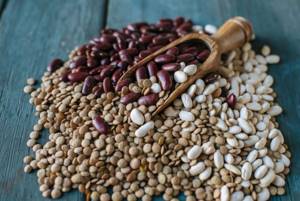
Beans
One serving of cooked beans contains approximately 21 grams of protein, which is the building block of muscle mass. In addition to its high protein content, beans are also rich in fiber, which improves digestion.

Pistachio nuts
Pistachios are high in protein (about 25g per handful), making them an excellent nutritious snack. These nuts can be consumed either separately or together with other products, using pistachios as an additional ingredient that will add a “zest” to your dish.

Chickpeas
Chickpea seeds are one of the most versatile plant-based sources of protein. 100 grams of product contains approximately 19 grams of protein. Add chickpeas to a vegetable salad, and your body will receive not only the necessary protein, but also useful vitamins and minerals.
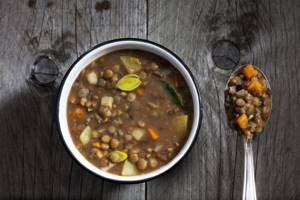
Lentils
100 grams of boiled lentils contains 7.7 grams of protein. Dishes made from lentils are distinguished by excellent taste and a large number of beneficial properties, which makes lentils another universal source of vegetable protein.
Brussels sprouts
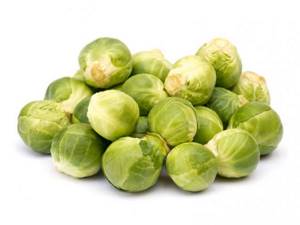
Brussels sprouts are another plant that contains a lot of protein. 9% is not so much, but taking into account the fact that cabbage generally requires more calories for its absorption than it provides, this can be considered a large amount for products of plant origin.
Cereals

Protein from cereals can not be counted at all. There is about 10-12% of it, but it is well absorbed and promotes digestion. But cereals should be considered as a source of slow carbohydrates and we do not count the protein from these products when we calculate the daily requirement. Because there is so little of it there that it can be neglected.






